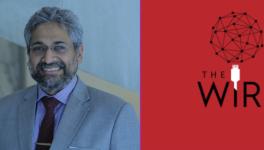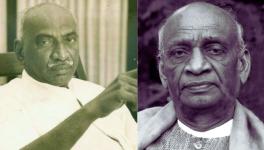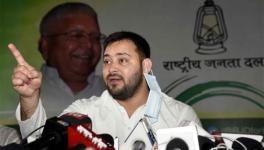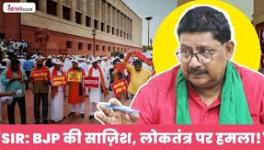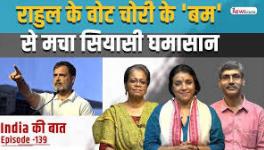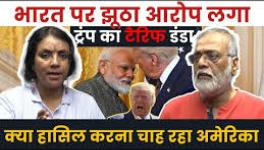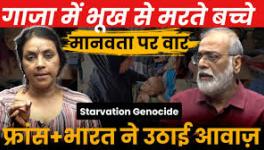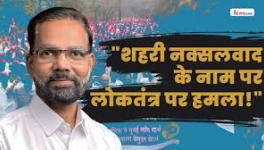Islamophobia and Why Being Silent on Targeting of Religious Symbols Doesn’t Help
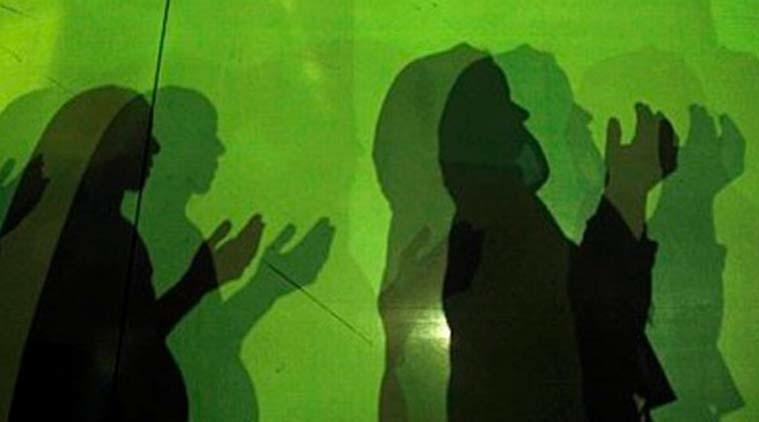
Rationalist theoretical training inclines us to denounce religious symbols and rituals along with all the contradictions and paraphernalia of organised religion. Islamophobia, however, like any chauvinist, supremacist, discriminatory and stereotype-furthering social attitude, is cast in the language of symbols, besides as myth and metaphors. There is thus a need to critically engage with the use of these symbols in projections meant to portray the community in a bad light.
The projection of the community as orthodox, for instance, is attempted by invoking symbols like the skull cap and Hijab; contempt for the community stirred up through false claims about population growth rates and, of course, the much over-hyped polygamy and ‘triple talaq’ divorce rates. While NCERT text-books have a long history of omitting the names of Muslim freedom fighters from the list, yearly calendars published by various ministries, departments and public sector undertakings have, of late, started carrying less of the ‘Taj Mahals’ and ‘Laal Qilas’ and more of the Forts of Jaigarh, Amer and the like. Muslims, wherever portrayed in pictures in these calendars or across various governmental websites inevitably show Muslim men as wearing skull caps and Muslim women with their heads covered.
Such purposive use of cultural identifiers by the state and its agencies not only constructs a certain (in this case conservative and orthodox) image of the community in popular imagination, it also grants this narrative certain legitimacy to this projection in the naïve mind.
Visual Projection of ‘Terrorists’
A very interesting twist to this is the visual-projection of ‘terrorists’ as clean-shaven, English-speaking, young professionals clad in western outfit in both cinema and media beginning in the last decade. One of the 2008 covers of India Today magazine, for instance, carried such a picture of one of the Batla House terror-suspects, labelling him as the ‘face of terror’ in modern times. A lot of movies made in recent years have done the same, from Aamir Khan starrer Fanaa (2006) to Akshay Kumar starrer Holiday (2014), Baby (2015) with English-speaking computer-dext young men shown as ‘Pakistani’, ‘Jehadi’, ‘terrorist’; making even the culturally ‘modern’ among Muslims suspects in popular imagination. Even the recently aired and critically acclaimed Anurag Kashyap-Vikramaditya Motwane directed Sacred Games series has that between-the-lines undercurrent with the uber-dashing Luke Kenny cast as the omniscient assassin Malcom/Murad, in the backdrop of identifying Rajeev Gandhi’s decision to unlock the gates of Babri Masjid as the ground zero of communal politics in India, in what appears to be a deliberate ignorance of the role that the murder of the Mahatma at the hands of Hindu supremacist forces in 1948 or the communalisation of India’s freedom movement beginning with the formation of the Muslim league in 1906 and the Hindu Mahasabha in 1915, had to play in the communalisation of popular politics in India.
‘Backwardness’: Facts & Myths
If one looks at facts, myths around the community’s projected ‘backwardness’ including population growth and divorce rates, for instance, crumble down immediately. The 10-year growth rate of population for Muslims has been found to have declined sharply from 29.52% in 1991-2001 to 24.6% in 2001-2011 (Census, 2011). Similarly, the rate of polygamy among various communities was; 2.5% for Muslims, 1.7% for Hindus, usually assumed to be monogamous, and 2.1% for Christians; National Family Health Survey-3 (2005-06); rate of separation of Hindu couples; 5.5 in 1,000, including cases of wives being abandoned by husbands, rate of divorce among Hindus: 1.8 per 1,000, Overall rate of legal divorce and extra-judicial separation: 7.3 per 1,000; overall rate of annulment of marriage among Muslims: 5.63, indicating an over-hype around both, Muslim polygamy and divorce figures; Census, 2011, GOI.
While the real challenges facing the Muslim community, including Muslim women in India are discriminatory with regard to access to education, differential concentration in employment and discriminatory access to public healthcare, besides, of course, safety of life and socially-coerced ghettoisation. The rate of employment among Muslims is lowest among all socio-religious categories (SRCs) at 33%, illiteracy 22.3% of all Muslims as opposed to 17.1% across all SRCs, 28.8% Muslim children out of school, higher than even Dalits at 22.8%, tribals 24.8%, lowest monthly per capita expenditure of Rs 980 as opposed to the national average of Rs 1,128 and highest social incidence of poverty at 25.4% as opposed to 22% all-India average; (Census, 2011, GOI). Despite all this, the right wing rhetoric repeatedly projects ‘Hijab’ and ‘Triple Talaq’ as the most dire threats to the survival of women of the community.
While Muslim women do exhibit lower average workforce participation rates compared with their non-Muslim counterparts, their educational deprivation is significantly explained by poverty, besides by discriminatory access to education and employment faced by the community (Rakesh Basant, 2012) and by the community’s disproportionate concentration in self-employment (Sachar, 2006, highest urban self-employment among all SRCs at 46%;(NSSO, 70th round, 2013). Other socio-economic indicators have been found to be at par with their respective rural and urban counterparts among other socio-religious categories (Abu Saleh Shariff, 2005, Mushirul Hasan and Zoya Hasan, 2012), rejecting claims of any disproportionate/extraordinary oppression or marginalisation faced by Muslim women at the hands of the community.
Targeting of Symbols
The need to continuously expose the false claims made by the Hindu Right is only as profound as the compulsion to defend the community’s cultural symbols and requires that attacks on the veil and the skull-cap be resisted for the sake of preservation of the community’s cultural identity. If the mainstream progressive discourse chooses to be silent about this sort of persistent targeting of Muslim cultural symbols and rituals, it’ll only help strengthen the anti-Muslim Islamophobic narrative by granting it silent and complicit sanction. After all, the killing of thousands of Muslims in Gujarat in 2002 or their mass displacement in the Muzaffarnagar riots in 2013, right up to the present day, marred with lynchings and disappearances and extra-judicial murders, from Akhlaq and Juniad and Pehlu Khan to Najeeb and Ishrat Jahan, or the roll-back on social sector budgets year after year and the lapsed minority fellowships, all, first and foremost, did find sanction in the collective silence maintained on the question of the anti-Muslim narrative, cast in the language of attacks on these symbols on a daily basis.
It is pertinent thus, that every time the skull-cap or the beard or the veil is invoked as a symbol of the community’s alleged ‘regressive’ and ‘orthodox’ character, progressive sections, while presenting facts as a counter, also denounce the attacks on Muslim cultural identity as attacks essentially on the cultural diversity and plurality of India and on the constitutional promises of dignity and equality for all.
(The writer is Assistant Professor, Department of Economics, Zakir Husain College, University of Delhi, and research scholar at the Centre for the Study of Social Exclusion and Inclusive Policy, Jamia Millia Islamia. siminakhter@gmail.com)
Get the latest reports & analysis with people's perspective on Protests, movements & deep analytical videos, discussions of the current affairs in your Telegram app. Subscribe to NewsClick's Telegram channel & get Real-Time updates on stories, as they get published on our website.










